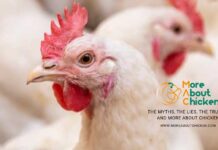
Hatcheries collect large quantities of data to monitor performance and to make sure equipment are operating within set operating limits.
These data are a valuable resource for the hatchery, and can be used identify problems and areas where improvements can be made. To achieve this it is essential that data are handled and analysed correctly. Good data analysis requires data to be stored in a database, effectively all the data to be analysed is in a single table or Excel sheet consisting of continuous columns and rows. The quality of the data analysis will also depend on the quality of the data: errors in the data will result in errors in the analysis.
One of the largest tasks when undertaking a data analysis is the validating of the source data and this can be done using a variety of methods:
(1) – Plotting all the data points to look for extreme values;
(2) – Sorting or filtering data to look for values outside expected ranges;
(3) – Check for consistent naming.
Reviewing data is an important management function and should be done routinely. The use of Excel Pivot Tables and Charts can be extremely powerful tools to help organise data and present the information in a meaningful way. Creating dashboards, where key management data are presented in tables and charts in a single view, can also a powerful way of monitoring the performance of the hatchery. Key to presenting data is that it shows performance against targets and that it highlights problems.
Statistical analysis can be a very powerful method for truly understanding the factors that are affecting performance. The advantage of statistical methodology is that it can include many factors at the same time within the analysis so that each factor can be evaluated when all the other factors have been accounted for. It is often stated that a statistical analysis can measure the pure effect of a given factor on performance. There are many techniques and computer programs that allow the user to carry out a statistical analysis, but all require the user to have some knowledge of statistical methodology.
The main methodologies used to analyse hatch data are multiple regression, standardized least squares and general linear models. Potential pitfalls when running a statistical analysis are that factors being investigated are not independent of each other, class variables are confounded or continuous variables are highly correlated with each other.
The other type of data analysis that may need to be undertaken in a hatchery are results from a field trial, for example comparing the performance of two incubator settings.
Running a successful hatchability field trial has three key requirements:
(1) – As much as possible make sure everything, other than the factor being investigated, is as equal as possible. For example if comparing two incubation settings make sure the eggs in the two test setters are from the same flocks and have the same egg storage.
(2) – Use lots of eggs. To detect a 2% hatch gain will require approximately 4,800 eggs per treatment and to detect a 1% hatch gain will require approximately 20,000 eggs.
(3) – Repeat the test several times, typically 3 or more, to make sure the results are consistent. When repeating a trial, if possible change which incubator is used for the control and test treatments.

















